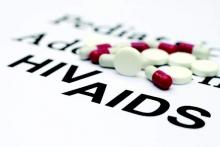A great volume of HIV and AIDS research enters the medical literature every month. It’s difficult to monitor everything, so here’s a quick look at some notable news items and journal articles published over the past few weeks.
A review article in Current Opinion in HIV & AIDS suggests that a better understanding of the role of opportunistic infections at the initiation of antiretroviral therapy, and the pathogenesis and long-term consequences of immune reconstitution inflammatory syndrome (IRIS), will assist in developing improved strategies for HIV prevention and treatment. The essay also notes that chronic viral coinfections with herpes viruses and hepatitis C virus are important factors in persistent immune activation in chronic-treated HIV.
Researchers in King County, Washington, examined trends in time from HIV diagnosis to viral load suppression to gauge improvement in the region’s HIV care continuum from 2007-2013. IN an article published in Sexually Transmitted Diseases, the authors discovered that the time from HIV diagnosis to viral suppression dramatically declined between 2007 and 2013, and more than three-quarters of recently HIV-diagnosed individuals in King County now achieve viral suppression within a year of diagnosis.
Another review essay in Current Opinion in HIV & AIDS examined the impactof HIV-associated immune activation on AIDS and non-AIDS morbidity and mortality. The authors summarize recent evidence helping to elucidate the immunologic pathways that appear most strongly predictive of infectious and noninfectious morbidity, highlighting the likelihood that not all root drivers of immune activation are likely to produce the same disease manifestations and/or be equally attenuated by early antiretroviral therapy initiation.
A study in AIDS examined the potential for combination antiretroviral therapy (cART)-free remission following analytic treatment interruption (ATI) in chronically HIV-infected patients with ultralow cell-associated DNA. In a highly selected population of 10 patients with excellent immune status, durable virologic suppression and ultralow reservoir, the success rate of ATI was 10% and 9 of 10 patients had prompt rebound of plasma viremia. Resumption of antiretroviral therapy led to a return to baseline cell-associated total DNA.
A population-based cohort-study found that estimated median survival time for HIV-infected individuals from aged 50 years has increased by more than 10 years from 1996-1999 to 2006-2014, but is still substantially lower than in the background population. Even among well-treated HIV-infected patients 50 years or older without comorbidity or AIDS-defining events, the estimated median survival time remains lower than in the general population.
Finally, a retrospective cohort study of 16,070 HIV-infected U.S. veterans discovered that the role of bicarbonate concentrations as a tool to monitor kidney health in HIV-infected persons may be limited in settings of tenofovir disoproxil fumarate use.
On Twitter @richpizzi

